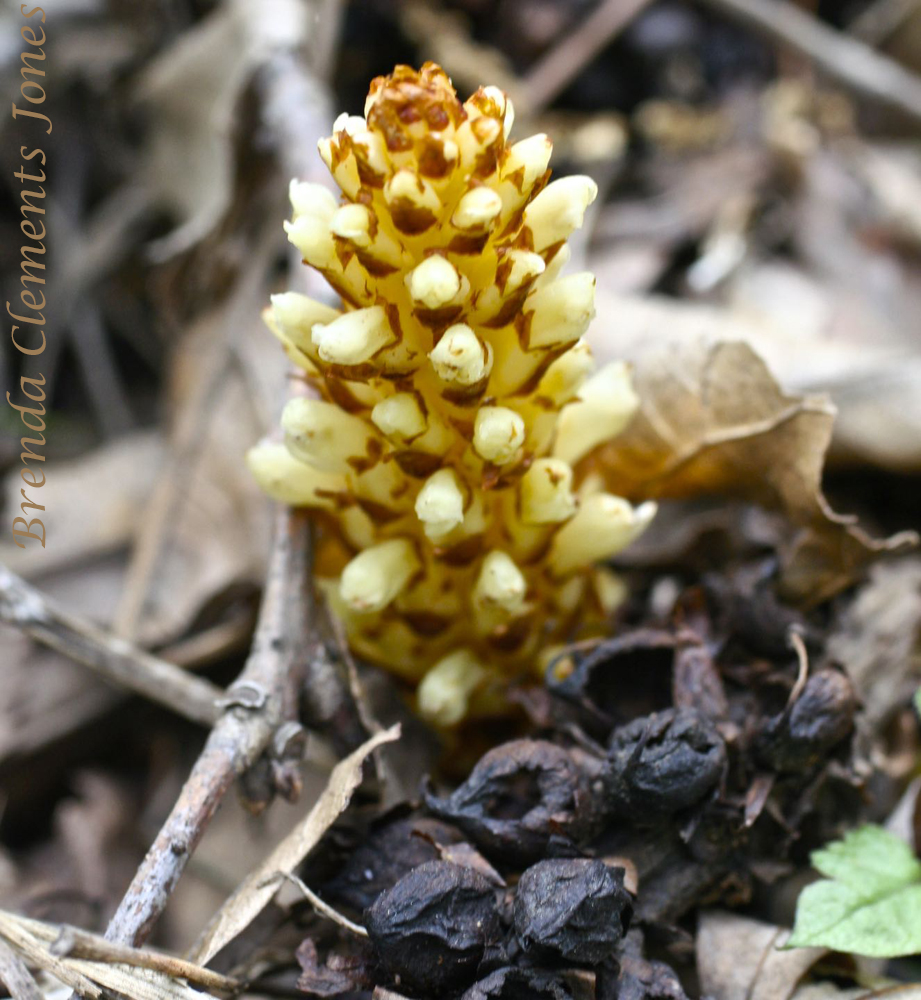
There are so many awesome treasures to be found in the woods. One of those treasures that is right up there near the top of my list is Bear Corn (Conopholis americana). It’s a native to eastern North America.

This is a plant that doesn’t have a speck of the color green because Bear Corn has no chlorophyll. Normally plants use chlorophyll and light to make food. But this plant isn’t able to perform photosynthesis. It’s a parasite on the roots of oak trees and perhaps beech trees as well.

These pinecone looking arrangements are the flowering structures that are sent up after four years of taking in nourishment from the oak or beech roots.

Four years underground taking in sustenance. The flowers emerge in the spring and bloom in a similar manner to other flowers.

Bear Corn is pollinated by flies and bees and is also capable of self pollination. After pollination the blooms are replaced by fruit containing seeds.

In the Shenandoah and Smoky Mountains Bear Corn represents a surprising percentage of the diet of bears, ten to fifteen percent. Deer, raccoon and coyote also eat these plants.

By autumn the fruit which has not been eaten will wither and drop, leaving the seeds to return to the soil to again seek out the oak or beech roots. This Bear Corn plant will continue sending up flowers each year for as many as six years.

2 responses to “Bear Corn”
This is a new one for me Brenda. I usually have an acquaintance with what you post, but this is a plant I have not encountered. Is it truly parasitic or is there a symbiotic relationship going on? After some years of a colony’s growth, does it weaken the oak tree?
Hi Nancy!
Always great to hear from you! Glad I’ve found something new for you. Bear Corn in indeed, is truly parasitic. And in all my reading about Bear Corn, I don’t see a single reference to it being detrimental to the health of their host tree.
Thanks bunches for reading my posts.
Bren